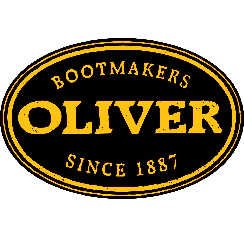Respirator Filters Don't Last Forever, So Why Take the Risk?

In the workplace, there are many airborne hazards which can enter via the respiratory system and pose a significant risk to worker’s safety and health. Some of these are potentially fatal, or lead to illness and disease longer term.
Occupational lung diseases are caused by exposure to hazardous dusts and or chemicals in the workplace. Contaminants include silica dust, concrete particulates, various fumes and vapours, pesticides, and fuels. Industries where there is a risk include manufacturing, construction, engineering, agriculture, transport, and storage.
You can identify the risks in your workplace by adopting the following process:
• Inspect and monitor workplace
• Talk with workers
• Talk with supply chains and networks about the products that are used in your workplace
• Review information from work, health and safety regulators, industry representatives, and safety professionals
If your business uses respirators, you must have a stringent respirator management program to best ensure the safety of everyone in your workplace. This includes knowing which respirator filters are best suited to your workplace requirements. There are three types of filters, all of which have a variety of different models to suit different situations:
1. Particulate Filters: Protect ONLY against particles. For example, dust, fumes, smoke, mould, and bacteria. The Australia-New Zealand Standard (AS/NZS 1716) classifies these filters into:
- P1: For use with mechanically generated particles.
- P2: For use with mechanically, thermally, or biologically generated particles, such as welding fumes, silica dust
and SARS.
- P3: For use with highly toxic and/or highly concentrated particulates. Needs to be used with a full-face mask or
head-covering respirator system.
2. Gas and Vapour Cartridge Filters: Protect ONLY against gases and vapours. Note, there are different types of filters in this category to suit different workplace situations.
3. Combination Filters: Protect against BOTH particles and gases. Again, there are different types of filters in this category.

The initial selection of any respirator and filter needs to be conducted by someone with a full knowledge of respiratory
hazards in the workplace. The correct fitting and wearing of a respirator are essential. Remember, one size does not fit all.
The respirator management plan must also include a regular examination of respirators and filters. A simple guideline to
remember is Respirator filters do not last forever. “There are a variety of factors which determine how long a filter will
last or when it should be changed.” says Barnabas Bucsi, 3M™ Channel Marketer. Particulate Filters can get clogged,
which makes them harder for the users to breathe properly, and in what is known as ‘breakthrough’, the sorbents of Gas
and Vapour Cartridge Filters can become saturated, which reduces their capacity to stop contaminants.
Significantly, filters can also lose effectiveness when they are not stored correctly; keep them in places that are protected from contaminants, otherwise the filters may clog up or become saturated even when not being worn. There is no set life for any filter. Any reduction in effectiveness is influenced by the filter’s workload. For example, a dusty job will block a filter more quickly than a relatively clean job.
The decision to change a filter varies from user to user, application to application, and environment to environment. Companies may prescribe a filter change schedule, based on risk assessment for activity, and respiratory protections equipment used. It often depends on the user’s tolerance and sensitivity to changes in breathing loads. “As a general guide, a particulate filter should be replaced when the breathing load becomes too difficult for the user; when the filter has sustained any type of physical damage, such as being burnt or cut; or when the filter has become unhygienic from such actions as coughing or sneezing.”
So, to breathe easy in the workplace, we must all be aware that we should not take breathing for granted.









